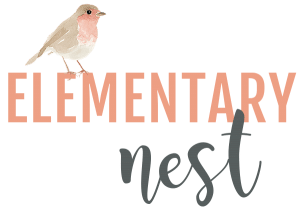
Opinion Writing may seem like the most simple of the writing standards, but without adequate modeling and practice, students won’t be able to fully develop their opinion writing skills. Today, I am going to talk about 6 strong anchor charts for opinion writing. Anchor charts are always a great tool for instruction, especially when introducing a new skill. They are visual, interactive, and they can help students organize their thoughts!
Introducing Opinion Writing Structure

When introducing opinion writing, you will want to preview the overall structure. Students need to know what they’re looking for in writing examples and modeling. This is always one of my 6 anchor charts for opinion writing because the “OREO” acronym is very helpful! This is an easy way for students to remember what to include in an opinion writing piece. The first O is the introduction (which we will talk about later in the post). The introduction will need to include the writer’s opinion. This is followed by the R, reasons, and E, examples, or evidence. Finally, students will need to restate their O, opinion in the conclusion. If they can remember OREO, they can remember the Opinion Writing structure!
Teaching How to State an Opinion

After introducing the structure, students will need to start developing their own opinion statements. This simple anchor chart can be an interactive lesson, with your students’ involvement in the process. Students will need to have a collection of Opinion Stems in their mental writing toolbox so that they can develop strong opinion statements. They will need to learn to include an opinion stem in the statement. So, instead of saying, “cats are the best,” they will say, “In my opinion,” or “I believe that cats are the best type of pet.” Providing examples for the students to reference will help them state their opinions across all content areas, too!
Anchor Charts that Teach Supporting Reasons

Next, comes another reusable anchor chart for opinion writing. Students are going to benefit from learning how to supply reasons within their opinion writing and throughout the rest of their skill development. Not only with they use this skill in writing class, but across all content areas and in their real lives. When teaching this skill, you will want to focus on the question: Why? I also like to reference the phrase: Prove it. Provide plentiful examples for reasons and evidence so that students are able to pick out quality over quantity.
This easy, reusable anchor chart allows students to think about reasons and evidence. When discussing an opinion topic, record two solid pieces of evidence or reasons, written in strong opinion statements. If you laminate it, you can have students record their own examples throughout your opinion writing unit. The more they practice, even when seeing other student examples, the more they learn!
Teaching Introductions and Conclusions Explicitly


Now, just because opinion writing follows more of a formula than the other types of writing, doesn’t mean it shouldn’t be interesting. Hooking your reader and reminding them of your purpose is going to improve any type of writing. So, it is important to have explicit instruction and practice for introductions and opinions. These anchor charts could be reused and referenced for opinion writing pieces throughout your year.
Create an anchor chart with different examples of interesting introductions. Again, these can be changed throughout your unit. In fact, as a positive reinforcement tool, when you read a great introduction from one of your students, stop and call attention to it. “Wow! I have just read a great introduction by _______. It hooked me! ________ would you like to add that to our introductions poster?”
With conclusions, students will need to learn solid conclusion stems. So, another simple anchor chart with sticky notes should do! Keep the focus on redirecting the reader. Students will want their readers to finish the piece knowing exactly what their opinion is.
Don’t Forget Linking Words and Transitions

Finally, the last of my 6 anchor charts for opinion writing! We can’t forget linking and transition words. Use an anchor chart like the one above to create a collection of strong linking and transition words. Students will most likely need plenty of modeling and examples for this part of the process. It is very easy for students to get stuck on a few transition words that they end up repeating again and again. These can be taught or revisited in the editing and revision process to clean up their pieces. Then, keep the anchor chart accessible so that it can be easily referenced and added to.
Interested in Ready-Made Lesson Plans for Opinion Writing?
If you’re interested in getting your students to master opinion writing without having to spend hours on planning and prep, I have all-inclusive units for you! These no-prep units have everything you need to teach opinion writing in your classroom!





Opinion Writing Units come complete with anchor charts, lesson plans, graphic organizers, writing prompts, and more! Click the button for your grade-level below:


















